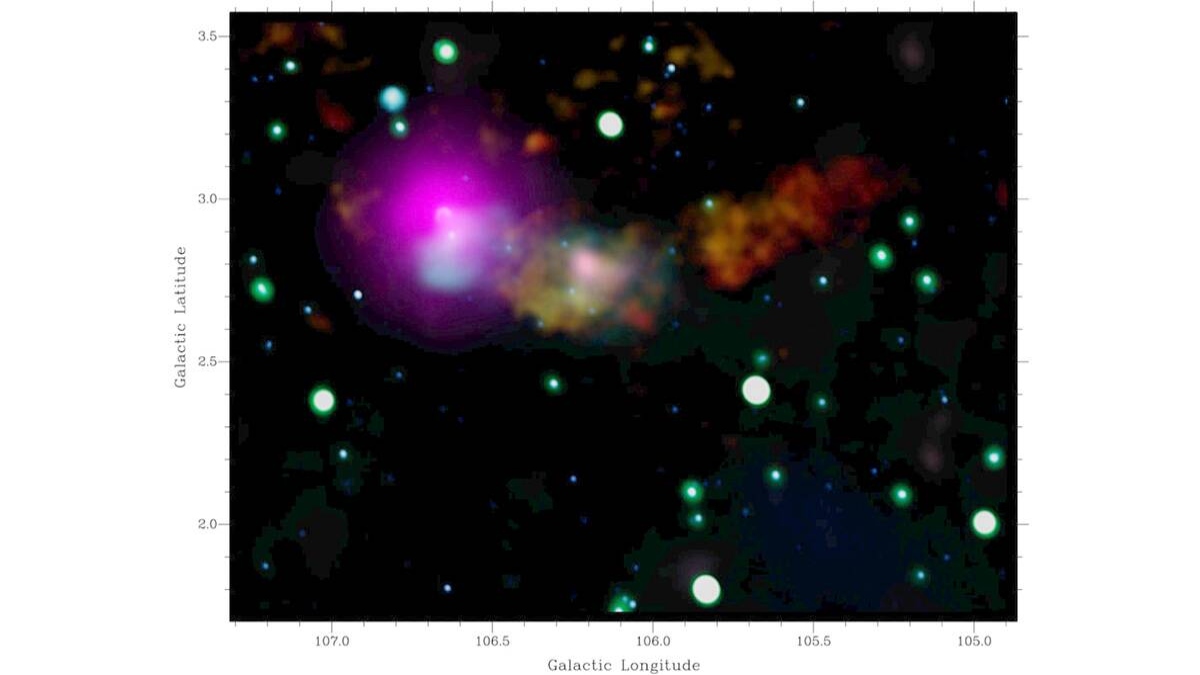


Researchers are now getting close to correctly identifying PeVatrons, the source of some of the highest energy particles that whip through our galaxy, thanks to research that analysed 12 years’ worth of data from NASA’s Fermi Gamma-ray Space Telescope.
Physical Review Letters research paper provides documentation of the work.
Cosmic rays are streams of tiny particles that race around our galaxy and impact the atmosphere of our planet. Protons make up the majority of them, although occasionally atomic nuclei and electrons are also present. They all have an electric charge, which causes their courses to diverge and jumble as they travel across the magnetic field of our galaxy.
This successfully conceals their origin by making it impossible to determine their initial path. However, when the cosmic ray particles strike the atmosphere close to supernova remnants, they create gamma rays, some of the most energetic radiation types known to man.
The erratic magnetic fields close to supernova remnants catch these particles. They go through the shock wave of the explosion several times, each time gaining energy and speed. They will eventually lose their grip on the supernova remnant and careen off into the vacuum of space. The Large Hadron Collider, the most potent particle accelerator ever created, can produce 10 times as much energy as these particles.
These high-energy extreme cosmic particles are produced by PeVatrons, which have shown to exist in a few sites. Naturally occurring supernova remnants make up many of these contenders. But only a small number of the 300 known remains produce gamma rays with energy high enough to qualify as PeVatron candidates.
“This thing has attracted a lot of interest for a time, but we need to demonstrate that it is an accelerator of protons before we can call it a PeVatron. The problem is that the emission can be produced by electrons that have been accelerated to a few hundred TeV. In a news release, Henrike Fleischhack from the Catholic University of America in Washington and NASA’s Goddard Space Flight Center in Greenbelt, Maryland, said, “Now, with the aid of 12 years of Fermi data, we think we’ve proven the case that G106.3+2.7 is certainly a PeVatron. The study article’s co-authors include Fleischhack.
The prolonged tail of G106.3+2.7 produced GeV (billion electron volt) gamma rays, which Fermi’s main instrument, the Large Area Telescope, was able to detect. Even more intense gamma rays from the same place were captured by the VERITAS equipment at the Fred Lawrence Whipple Observatory in southern Arizona. Observatories in Mexico and China have recorded TeV readings in the region explored by Fermi and Veritas. TeV stands for 100 trillion electron volts.
Below 10 GeV, there was no discernible emission from the remnant’s tail. It was discovered that there is another source of radiation since the pulsar’s interference is minimal above that level. The team’s thorough study strongly suggests that PeV protons are the particles responsible for the gamma-ray emission.
Also Read: Stunning Images of Cartwheel Galaxy captured by James Webb Telescope